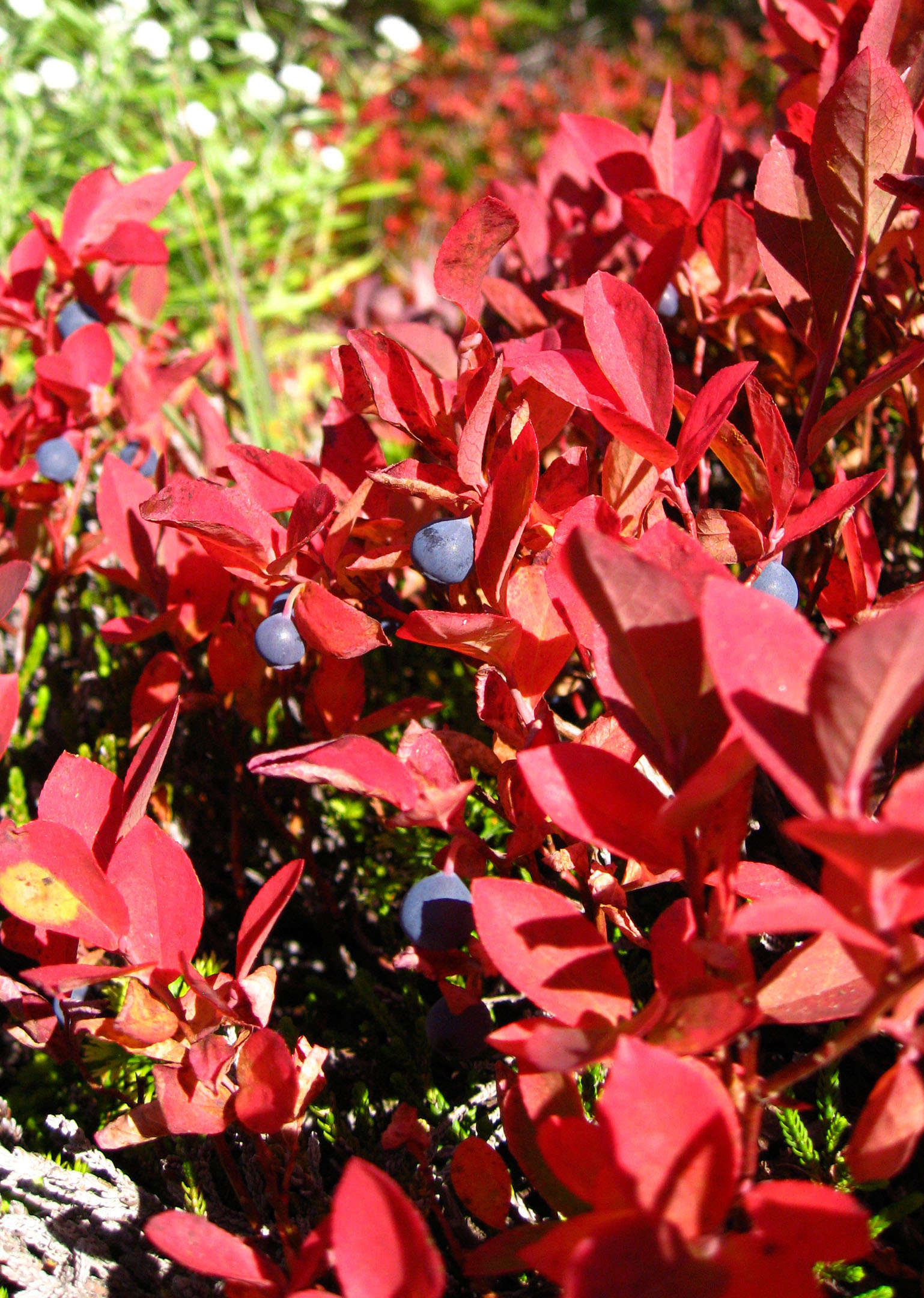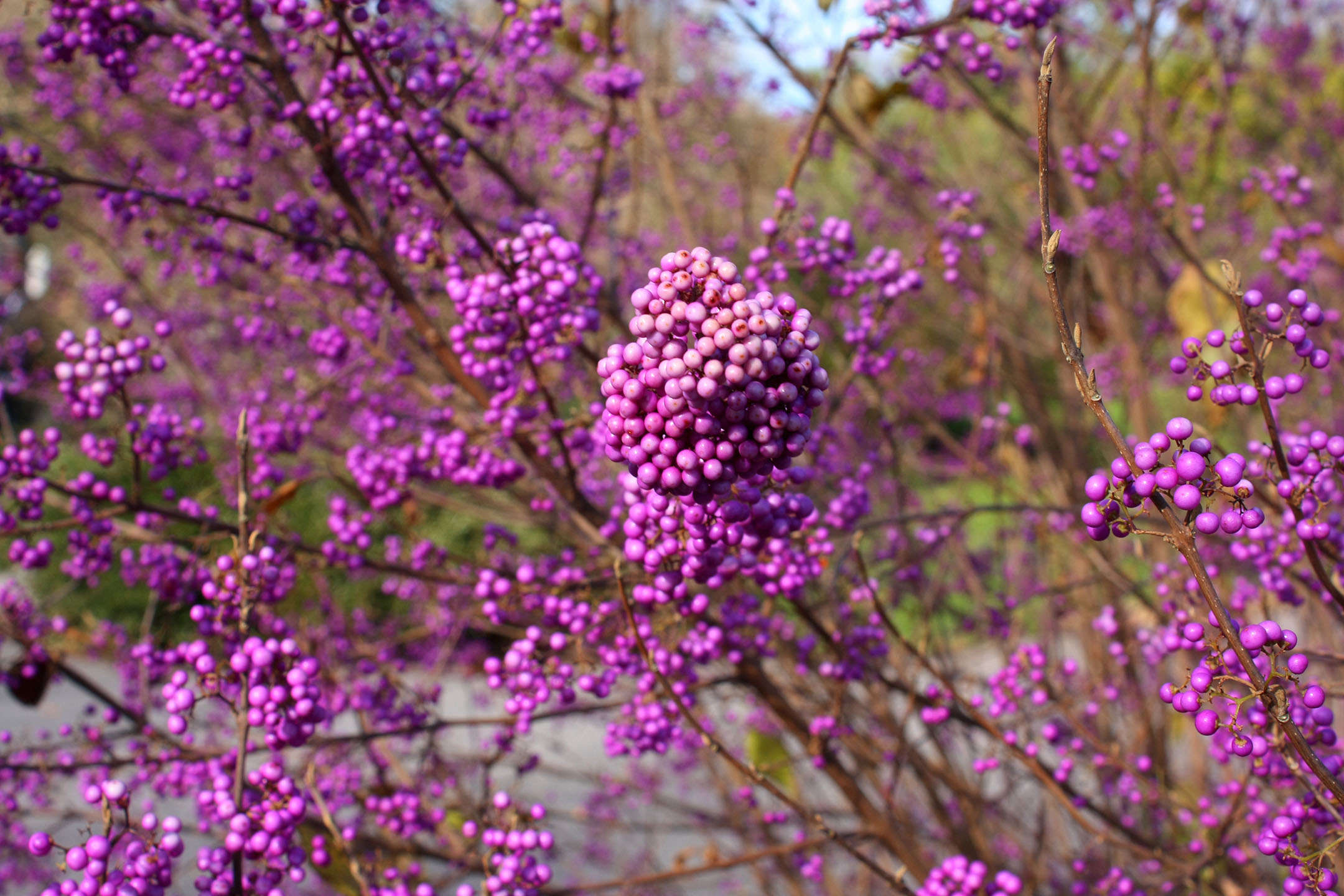Autumn is no time to give up, in the garden. While the long sleep of winter lurks, gardeners do not go gentle into the horticultural night. Even in the smallest garden you can have colorful fall foliage. We’ve chosen nine shrubs that rage against the dying of the light.
Photography by Marie Viljoen
Aronia

Above: In late fall the Aronias’ foliage turns plum-colored and scarlet. All three species of chokeberries are covered in clusters of white or pink blossoms in springtime, followed in late summer by edible red and black fruit (the juice is very tart but makes wonderful jelly). These indigenous shrubs grow naturally under taller trees and on damp woodland edges. They are beautifully suited to small gardens where they provide three seasons of interest in one package.
Bayberry

Above: Northern bayberry (Myrica pensylvanica) is a hardy seashore native which has evolved to withstand extreme conditions, from salt-drenching to high winds and drought, qualities which suit it perversely well to container gardens on windy city rooftops. The fragrant leaves (use them in the kitchen as if they were bay) turn burgundy in cold weather and are very effective massed in a hedge.
Blueberry

Above: North American blueberries (Vaccinium), from the tiniest wild species to highbush, are a blaze of crimson in the fall. They require acidic soil to thrive, but if you cannot successfully lower your garden’s pH, grow blueberries in pots, which are much easier to amend. Their fall performance is a spectacular bonus in a shrub whose dainty spring flowers and much-loved fruit make it a must-have in any garden with four or more hours of sun. Blueberries are especially valuable where space is tight, and bang for the buck a high priority.
Beautyberry

Above: Planted in full sun, American beautyberry (Callicarpa americana) is a showstopper in late fall, sparkling unapologetically in lilac like a showgirl gate-crashing a civilized gathering of fall reds and yellows. The startling berries persist through winter, but if gathered in fall are an interesting spice flavor, and make a stunning and unusual jelly.
Rose

Perhaps the most famous shrub of all, roses delight with form and fragrance of flower. But their autumn show is in their hips, if you are clever enough not to deadhead repeat-bloomers after late summer. Choose your rose wisely. Rosa multiflora, which festoons roadways and forests in spring with its confetti branches, is highly invasive and has upset local ecologies. The same goes for the popular beach rose, Rosa rugosa. But not all roses are as aggressive, and many hybrids are better behaved. Also ask at native nurseries for indigenous American roses (e.g. Rosa virginiana, R. blanda, R. californica), whose qualities are becoming better appreciated.
Smoke Bush

Above: The spring and fall leaves of the North American native smoke bush (Cotinus obovatus) are show stealers. Early in the year the foliage is delicately pink, turning blue-green is summer and red-hot in autumn. The flowers are tiny but the wispy hairs that cling to the spent blooms create the characteristic puffs of smoke that give the shrubs their common name. Smoke bush needs full sun and very good drainage, and can withstand dry conditions.
Salt Bush, Sea Myrtle

Above: Baccharis halimifolia saves itself for cool weather, when this large member of the daisy family becomes an enormous cotton ball focal point, with thousands of flowers on the female plant turning to fluff. The native shrub is salt- and wind-tolerant but does not like to dry out. It is an excellent choice for large, sunny gardens and for native sidewalk gardens that need to withstand winter road salting.
Sumac

Above: Sumacs (Rhus species) come in suitable sizes for all gardens. Smooth and staghorn sumacs are tall and rangy, with gorgeously red conical fruit heads (tarty and delicious) appearing in late summer. Fragrant sumac is more compact (the fragrance is in its spring flowers) and the fruit drupes larger and looser in form. All sumac foliage turns intensely scarlet in fall.
(Rhus species are not related to poison sumac, Toxicodendron radicans.)
Winterberry

Above: Not all hollies are prickly. Deciduous winterberry (Ilex verticillata) loses its leaves in late fall, revealing its greatest asset: holiday-red berries clustered tightly along the length of its branches. Bring them indoors for their cheer or leave them to glitter in the snow.
For more ways to add color to an autumn garden, see:
- Fall-Blooming Anemones for Autumn Color.
- Color Theory: 10 Perfect Plant Combinations.
- 11 Best Trees to Plant for New England-Style Foliage.
Finally, get more ideas on how to plant, grow, and care for various shrubs and hedges with our Shrubs: A Field Guide.








Have a Question or Comment About This Post?
Join the conversation